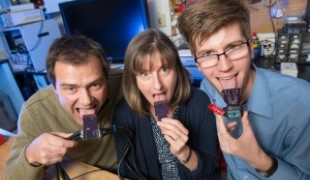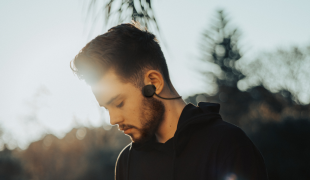- 9571
- 627
- 5
- 7
- 0
- Help Ukraine
About the solution
Among his inventions, he has a system to people improve the effectiveness of lip-reading, a method that enables deaf people to converse on the telefone, an Internet-based system for capturing real-time transcripts of phone conferences, and electronic glasses that could print information on the lenses from a computer.
Dimitri is deaf since he was three. He holds 159 US patents and was granted the title of Master Inventor IBM in 2002, 2005 and 2010.
The inventor built a technology that allows deaf people to have phone conversations.
According to the researcher, it works this way: “The writer hears what we are saying on the telephone. It has some abilities like a court reporter, so it writes and puts the text on the Web site. And then we read the transcription on the Web site. This is a simple thing, but 15 years ago when I suggested it, it was a totally new thing. But then a lot of people started to use it at IBM and in many places and many court reporters developed different technologies for how to send the text to a Web site”.
In 2012, the inventor was honored at the White House in a ceremony to celebrate those "leading the fields of science, technology, engineering, and math for people with disabilities”.
Adapted from: http://cnet.co/2fbQfxt
This solution shall not include mention to the use of drugs, chemicals or biologicals (including food); invasive devices; offensive, commercial or inherently dangerous content. This solution was not medically validated. Proceed with caution! If you have any doubts, please consult with a health professional.
DISCLAIMER: This story was written by someone who is not the author of the solution, therefore please be advised that, although it was written with the utmost respect for the innovation and the innovator, there can be some incorrect statements. If you find any errors please contact the patient Innovation team via info@patient-innovation.com
-
-
395
-
0
-
4470

Team creates device that allows "listening" through tongue
COMMUNICATION: Communicating, whether by speaking, listening, or other means
Hearing Disorders
Assistive Technology access
AI algorithm
Hearing loss or ringing in the ears (tinnitus)
Regaining sensory function
Promoting inclusivity and social integration
Improving Speech and Communication
Neurology
Otorhinolaryngology
United States
-
-
-
754
-
0
-
16886

Proloquo2Go – App to help people communicate
CAREGIVING
COMMUNICATION: Communicating, whether by speaking, listening, or other means
Social interaction
Paralysis
Autism
Cerebral Palsy
Brain Stroke
Brain Injury (Abscess, Brain Barrier Defect, Brain Contusion, Brain Hemorrhage, Brain Edema)
Assistive Daily Life Device (to help ADL)
Assistive Technology access
App (Including when connected with wearable)
Tremors
Muscle cramps or spasms
Difficulty coordinating movements
Muscle weakness
Difficulty speaking or understanding speech
Trouble with fine motor skills (e.g., writing, buttoning clothes)
Twitching or involuntary movements (myoclonus)
Acquired language impairment (Aphasia)
Promoting self-management
Managing Neurological Disorders
Building Supportive Community Relationships
Promoting inclusivity and social integration
Improving Speech and Communication
Caregiving Support
Clinical Pathology
Medical Genetics
Neurology
Pediatrics
Rheumatology
Netherlands
-
-
-
563
-
0
-
10783

Pedro, an acoustic engineer designed an open-ear hearable device in order to allow everyone to listen to music!
COMMUNICATION: Communicating, whether by speaking, listening, or other means
Hearing Disorders
5 Senses support devices: (glasses, hearing aids, headphones...)
Assistive Technology access
Body-Worn solutions (Clothing, accessories, shoes, sensors...)
Regaining sensory function
Promoting self-management
Promoting inclusivity and social integration
Improving Speech and Communication
Raise awareness
General and Family Medicine
Internal Medicine
Neurology
Otorhinolaryngology
Denmark
-
 en
en